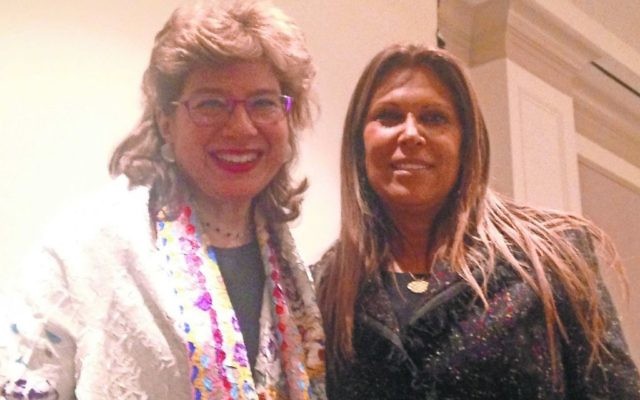Film Helps Spill Black-Jewish Emotions
By Cole Seidner
An emphasis on having the holy chutzpah to challenge the system ran through an event previewing a documentary about Spill the Honey at The Temple on Tuesday, Oct. 13.
Spill the Honey — the organization and the documentary — focuses on the connection between the African-American community and its experience with slavery and the Jewish community and the Holocaust. The panel discussion that night included Dartmouth College professor Susannah Heschel, whose father, Rabbi Abraham Joshua Heschel, famously walked arm in arm with Martin Luther King Jr. in Alabama in 1965.
Reports of racism running rampant have blasted on the news and social media since Trayvon Martin was killed in 2012, but little has changed beyond the chatter at the coffee table. Last year’s Ferguson riots brought the anger to the surface, but policies haven’t been created to bring police brutality to an end.

Susannah Heschel (left) joins Spill the Honey head Shari Rogers at the documentary preview at The Temple on Tuesday, Oct. 13.
The name of Spill the Honey comes from when founder Shari Rogers went to Israel and met a Holocaust survivor who led her and her group on a tour of Yad Vashem. He told a story of his mother shoving a pot of honey into his arms, telling him to “take it, be sweet and survive” as the Nazis separated them.
For Rogers, the honey was most similar to the wine on Shabbat, when the cup is filled until it overflows and spills. The wine is similar to hope and knowledge.
If anyone has ever given hope, it was King. He guided the nonviolent civil rights movement and, as Rogers strives to remind everyone, was aided by many Jews.
The documentary Spill the Honey is creating, also named “Spill the Honey,” is meant to remind everyone of when Rabbi Heschel and other Jews walked in Selma and the supportive relationship King had with the community.
There were some technical difficulties in getting the documentary to play, but it remained inspirational. While it hadn’t been edited or color-corrected, viewers could see the tears on the interviewees’ faces and the emotion behind the stories.
A notable problem is that those who were in the civil rights movement are dying out, and the new generation is not connected emotionally to their stories. The discussion at The Temple was impassioned, addressing what King wanted for everyone and how the two communities used to be entwined.
What may have started as a simple debate over the differences between “black lives matter” and “all lives matter” turned to the communities of Morehouse and Spelman.
Heschel discussed ways to help college towns, but a woman in the audience thought it could be offensive to imply that college towns are unable to fix things on their own.
“We have both survived slavery, and we are both still here,” said a man in the audience. “They are killing us dead in the street. … This is an indictment to bring us back together.”
He added, “If we don’t do something in this room and spill the honey, then everything falls.”
The passion in the room was tangible after that small speech, though it might not end up in the documentary because the cameras in the room remained on the panel of the Rev. C.T. Vivian, the Rev. Gerald L. Durley, former American Jewish Committee Southeast Regional Director Sherry Franks, Heschel and Roger.
The documentary succeeded in starting the conversation on improving the two communities’ relationship and in reminding attendees that once we were strong together.




comments